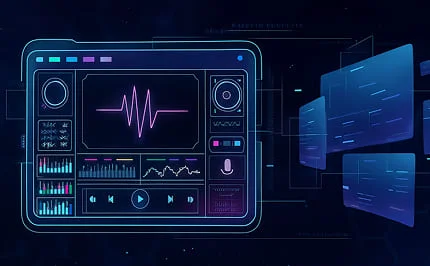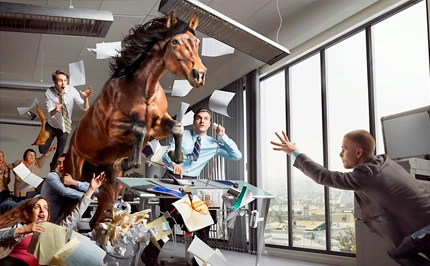Many people cannot imagine their leisure without watching movies or TV shows and children – without cartoons. The attention of viewers is often attracted to foreign tapes. Therefore, so that everyone can watch the selected movie or cartoon in an understandable language, there is voice acting.
Sounding cartoons, films or TV shows means recording voice acting of the film. Voice acting can be preliminary or subsequent. With preliminary voice acting, voices are first recorded and then filming is done or an animation is created where the facial expressions of the characters correspond to the facial expressions of the actors. The essence of the subsequent dubbing is to create a phonogram for already shot film. Such voice acting is performed by synchronizing the sound with the actions of the actors. Typically, this method is used if in the conditions of shooting due to extraneous noise it is impossible to obtain a high-quality phonogram. A variety of subsequent voice acting is dubbing.
What is dubbing?
Dubbing is a way of translating and dubbing films, cartoons and TV shows when the original language is replaced and the other is completely superimposed on the video. Dubbing a video abroad is a rarity. Mostly films are published in English, and if it's necessary, use captions in the show. In the Soviet Union, there was practically no duplication of foreign films into the Ukrainian language. However, years passed, power changed and technology developed. Modern Ukrainian dubbing is done by specialized studios with the help of professional actors and high-quality equipment.
Dubbing has several features, in particular:
- when selecting actors for dubbing, their voice age, character temperament and original voice and timbre are taken into account;
- for duplication special styling of the text and translation processing are formed;
- each actor must be voiced by a different person. However, there have been cases when one dubbing actor voiced several characters. As a rule, this is a professional actor and only specialists can recognize such voice acting;
- during dubbing, the acoustic conditions must be observed. For example, if an actor speaks in the bathroom, then the understudy's voice should sound with an echo. Other noises and voice-over dubbing (narrator's voice) are also recorded separately.
Along with dubbing, off-screen translation is often used:
- ne-voice – when the entire film is voiced by one dubbing actor;
- two-voiced – all female performers are voiced by one woman, and male actors – by one actor;
- polyphonic voice acting is the most popular option. Each character is voiced by a different dubbing actor.
How does dubbing differ from polyphonic translation (voice acting)?
In a polyphonic translation, voice acting is superimposed on top of the original language of the film's actors. It can be heard in the background, at about 30 percent volume. Translation – 70 percent – sounds a little behind. But when it comes to dubbing, the original phonogram of the actors is completely turned off, and the whole text is voiced by the dubbing actors. When viewing, viewers hear all the text in their native language. It is difficult to say which way of voice acting is better, because each has its own advantages. Dubbing completely immerses the viewer in the atmosphere of the film. On the other hand, the polyphonic translation allows you to hear the original voices of the actors, their timbre and intonation. This is the main difference between dubbing and voiceover. It is dubbing and polyphonic translation behind the scenes that is most often used in the translation of films and cartoons.
How is dubbing done for films and cartoons?
Is dubbing perhaps the most difficult type of voice acting. The audience should have the impression that the actors playing the roles say. For a good result, the following people are involved in the work: translators, dubbing director, assistant director, synchronous text author (stacker), recording engineer and dubbing actors. Languages differ from each other, so when it comes to voicing English words in Ukrainian, you need to adjust the translation to the articulation of the actors of the film. Sometimes you have to change phrases so that the translation looks natural.
As a rule, dubbing actors are recorded in turn. This is done in order to be able to create a multi-channel phonogram and to be able to edit some inaccuracies. In addition, for voice acting, scenes with offscreen noise from the airport, train station, school, hospital and even the market are sometimes needed. Several dubbing actors are attracted to this.
Features differences between scoring films and cartoons
At first glance, it might seem that the dubbing actor’s job is simpler than a full-fledged actor. However, it is not. After all, you need not only to read the text from a sheet in the studio, but also to fully get used to the role without the appropriate atmosphere for this. A dubbing actor plays a role without scenery, light, makeup and does not interact with other actors in the film. The voice is his only tool to get used to the role. In some cases, different roles take a lot of time. There were times when actors were taken into the role using only text and voice for months and the process of scoring takes from several hours to several weeks. However, considerable efforts and painstaking work on oneself justify the result. Thanks to the work of dubbing actors, we can watch foreign films without too much effort.
Dubbing cartoons and films is slightly different with each other. During the voicing of cartoons, large companies first invite actors and then adjust the script and character images for them. Recording begins with work on the soundtrack and then the lips of the characters are drawn under it. Abroad, famous actors often voice cartoons. For example, Zed from Antz was voiced by Woody Allen, donkey from Shrek – by Eddie Murphy. In Japan, actors who voice anime are called seiyu. There are even special courses, which are very difficult to get because of the big competition. A professional seiyu should be able to speak in different voices and sing. It happened that after training students went to the stage and became famous singers. Interestingly, most of the seiyuu are girls. They even voice male roles.
Dubbing films takes place in several technical stages. First, the text is translated, then the so-called installation sheet is formed from it. It spells out timing and all replicas. It is important that the text for voice acting coincides in timing with the original, otherwise the audio track will lag behind the video. This phenomenon is called the desync. After the translation, the text is edited. In professional and large studios, this is done by the stacker. He is responsible for ensuring that the voice acting of the translation matches the image on the screen. If everything is done synchronously, then the viewer should have the impression that actors playing roles play. This is the basic principle of dubbing. Only after translation and conclusion, the dubbing actor receives the final version of the text for voice acting. This process, in addition to advantages, has a disadvantage. Since the text passes through the translator, editor and the stacker, the sound of the film may be slightly different from the original.
High-quality dubbing in LANET PRODUCTION studio
You can duplicate not only feature films, cartoons, series or computer games, but also presentations, promotional videos, educational or documentaries. As you already understood, there are different types of voice acting, so LANET PRODUCTION dubbing studio experts in Kiev will not only help you decide which one is best, but taking into account all your wishes, they will make high-quality voice acting. We will provide quality dubbing services, arrange your video and make it understandable to viewers. Entrust your video to us and get professional dubbing.










